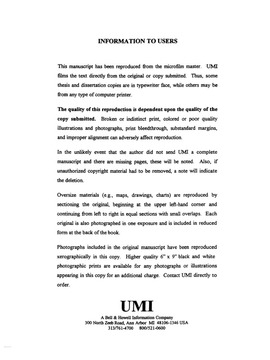| dc.contributor.advisor | Gupta, Anuj, | en_US |
| dc.contributor.author | Wang, Wei. | en_US |
| dc.date.accessioned | 2013-08-16T12:30:21Z | |
| dc.date.available | 2013-08-16T12:30:21Z | |
| dc.date.issued | 1998 | en_US |
| dc.identifier.uri | https://hdl.handle.net/11244/5730 | |
| dc.description.abstract | The objective of this study was to study the improved vertical layering method for scale-up, to develop an effective scale-up methodology, and to investigate the effects of geological modeling strategies, well locations, and reservoir boundary conditions on the scale-up of petrophysical properties. The Gypsy formation was used as the experimental site in this study. | en_US |
| dc.description.abstract | The scale-up method developed in this study was applied for three Gypsy models. It was observed that the transmissibility scale-up is only suitable for linear flow. A scale-up on productivity index must be conducted to consider the effects of radial flow around wellbore in order to obtain a satisfactory scale-up result. Significant improvements were obtained after conducting a PI scale-up. Contrary to our expectation, channel model and lithofacies model resulted in similar scale-up results, but flow unit model resulted in large errors. Comparing the scale-up results for three different production scenarios and three different boundary conditions, it was observed that the proposed scaling process provided better results in scenario involving line-drive compared to the nine-spot and five-spot scenarios. The method also produced better scale-up results for system with no-flow boundary condition compared to bottom-water drive and edge-water drive. | en_US |
| dc.description.abstract | Three Gypsy models, channel model, lithofacies model, and flow unit model, were generated in this study. A methodology for scale-up was developed, in which transmissibility, instead of permeability, was scaled up. After a linear scale-up was conducted between the grid blocks, a scale-up on productivity index, or PI scale-up, was performed to consider the radial flow around the wellbore. Special considerations were given to the pinch-out grid blocks in the system in order to obtain a representative flow simulation. Two hypothetical models, a layer-cake model and a pinch-out model were used to illustrate the application of the methodology. Successful scale-up results were obtained after a PI scale-up technique around the wellbore was applied. | en_US |
| dc.format.extent | xix, 186 leaves : | en_US |
| dc.subject | Oil reservoir engineering Mathematical models. | en_US |
| dc.subject | Engineering, Petroleum. | en_US |
| dc.subject | Geological modeling. | en_US |
| dc.title | Strategies of geological modeling and scale-up in reservoir simulation. | en_US |
| dc.type | Thesis | en_US |
| dc.thesis.degree | Ph.D. | en_US |
| dc.thesis.degreeDiscipline | Mewbourne School of Petroleum and Geological Engineering | en_US |
| dc.note | Adviser: Anuj Gupta. | en_US |
| dc.note | Source: Dissertation Abstracts International, Volume: 59-11, Section: B, page: 6048. | en_US |
| ou.identifier | (UMI)AAI9911863 | en_US |
| ou.group | Mewbourne College of Earth and Energy::Mewbourne School of Petroleum and Geological Engineering | |
